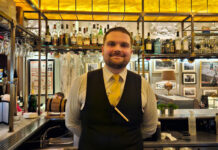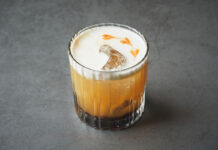
Burns Night can be lucrative for operators at a quiet time of year
IT’S not just haggis, neeps and tatties which can expect a sales bump in time for Burns Night.
The event, on January 25, also brings an opportunity for pub and bar customers to toast absent friends with some fine drams or traditional Scottish ales.
Euan Mitchell, managing director of Arran Distillery, which produces a Robert Burns Single Malt Whisky endorsed by the World Burns Federation, said Burns Night is an opportunity to highlight Scotland’s traditions and heritage.
“We tend to see more up-sales at this time of year, driven in part by consumers stocking up for Burns Night,” said Mitchell.
“With the dearly held food and drink traditions that surround Burns Night, it is an obvious time to draw attention to Scotland’s heritage and produce.
“Obviously January is traditionally a quiet point of the year due to people staying in after the Christmas and New Year festivities.
“This makes Burns Night especially important in keeping sales steady.
“Burns Night is important to the trade in general as it helps sales remain steady in a quieter period when sales would usually drop off slightly as people tend to stay in more.”
Mitchell said that whisky has an “integral role” in Burns Night traditions and encouraged bars to host their own Burns Nights and drinks offers.
Linking food with whisky, he said, was an opportunity to pair Scotland’s larder with its whisky heritage.
The occasion is also a chance to highlight Scotland’s Year of Food and Drink.
He said: “Food and drink go hand in hand with Burns Night. Whisky and clootie dumpling are just as important as the Selkirk Grace.
“As one of the most important cultural events in the Scottish calendar, it presents the perfect opportunity to promote 2015 as a Year of Food and Drink by placing both at the centre of Scottish tradition and heritage.”
The occasion was described as an “important date” for licensees by Jim Grierson, on-trade sales director at Maxxium UK, whose portfolio includes The Famous Grouse, Laphroaig and The Macallan.
He said it provided the chance to encourage customers to try something new and distinctly Scottish.
“Burns Night provides the opportunity to entice consumers to try something new by stocking a broader range of premium drinks that appeal to every taste,” he said.
“By offering a good and well-balanced range of premium malt and blended whiskies, bars and pubs can ensure that the full flavour range is covered.
“This allows customers to select their favourite whisky whilst also making it possible to entice consumers to try an expression for the first time.”
Whisky, however, isn’t the only product expected to perform well on Burns Night.
Arran Brewery has created a Burns-themed brew called Guid Ale in anticipation of an increased demand for Scottish ales.
Gerald Michaluk, managing director of the firm, said the bard’s birthday on January 25 is a “great kick-start to the year” which “helps ease people out of post Christmas austerity”.
Like Mitchell, Michaluk recommended pairing drinks with food.
The brewery, which also produces Arran Blonde and Arran Dark, will be running promotions such as ‘trips to Burns country’ during the summer months.
Further Burns brews have been created by Caledonian Brewery.
The Heineken-owned brewery, whose portfolio includes Deuchars IPA and Caledonian 80/-, has also released a new beer called Great Scot which will be available during January.
Managing director Andy Maddock claimed it is a good accompaniment to our national dish and reckons food pairings are vital to increase beer sales.
“Think about bespoke menu and beer pairings,” said Maddock.
“You could do a tapas-style Scottish food [menu] and match your beer range to each dish. This would encourage consumers to try your range of beers too. Any event that gives consumers a reason to get out their house, meet friends in their local pub should be utilised.”
And Maddock advised pubs to consider looking even further ahead, to showcase Spring events such as Valentine’s Day.
And while different guest beers may be suited to different times of year, he stressed that it is important to strike a balance between variation and consistency.
He added: “It’s important that consumers feel comfortable with the range on offer. For existing cask ale drinkers, the bar should house a range of ABVs, styles and ensure rotation.
“Research shows that the template is a 50:50 split between well known beer and guest beers.
“Also, although we know cask drinkers love choice, be sure to let guest cask beers have some time on the bar before rotating.”



















